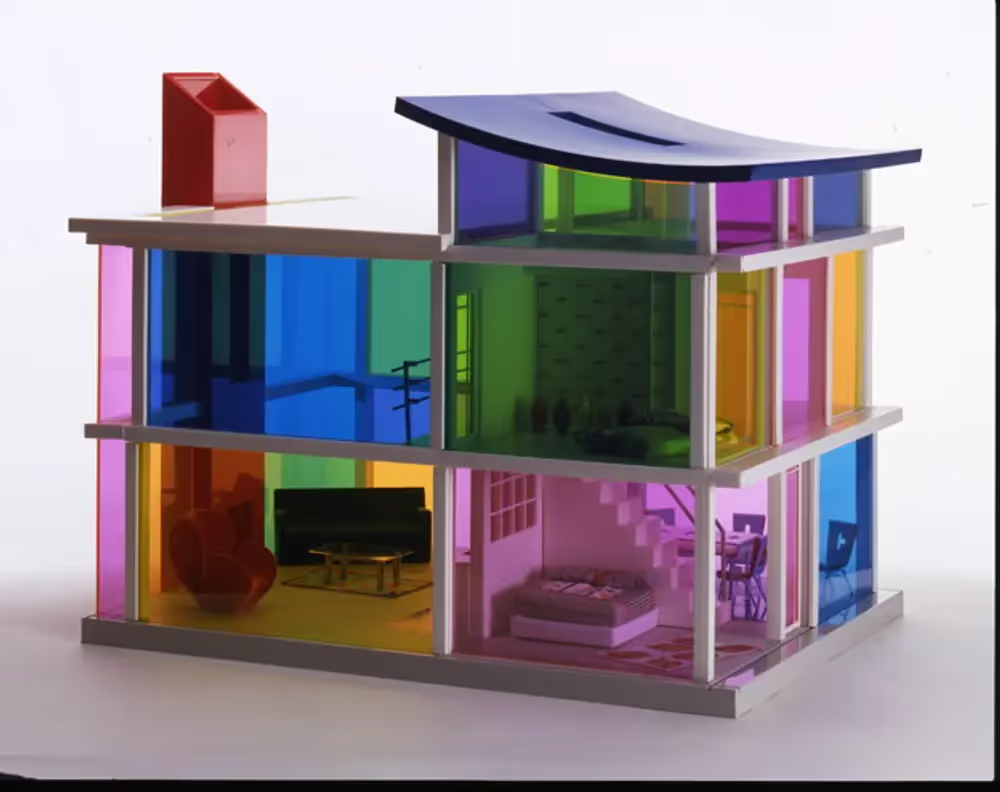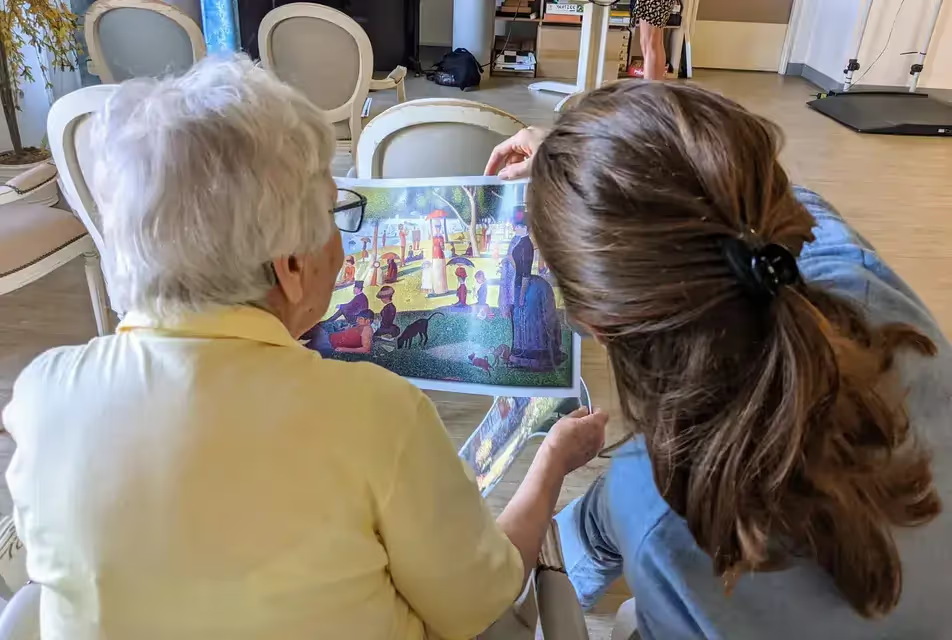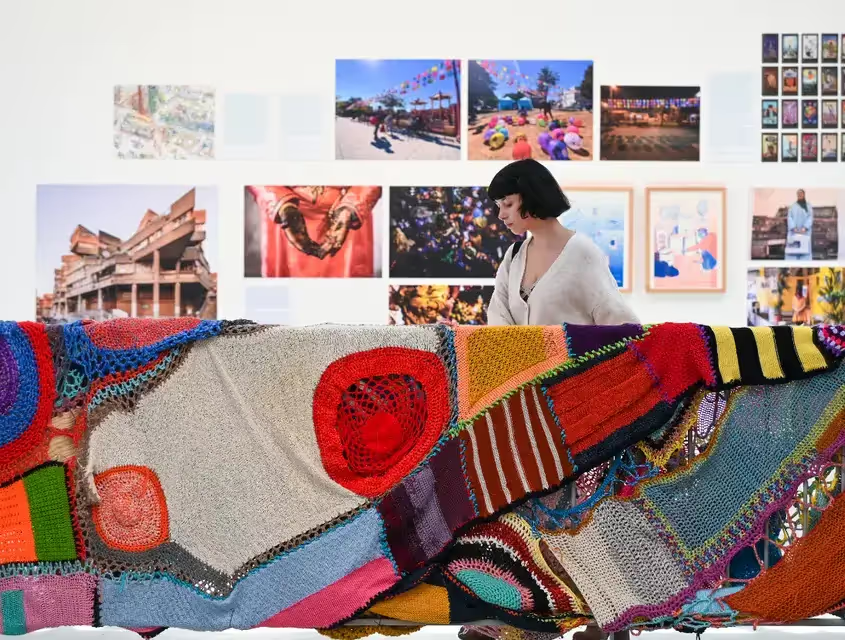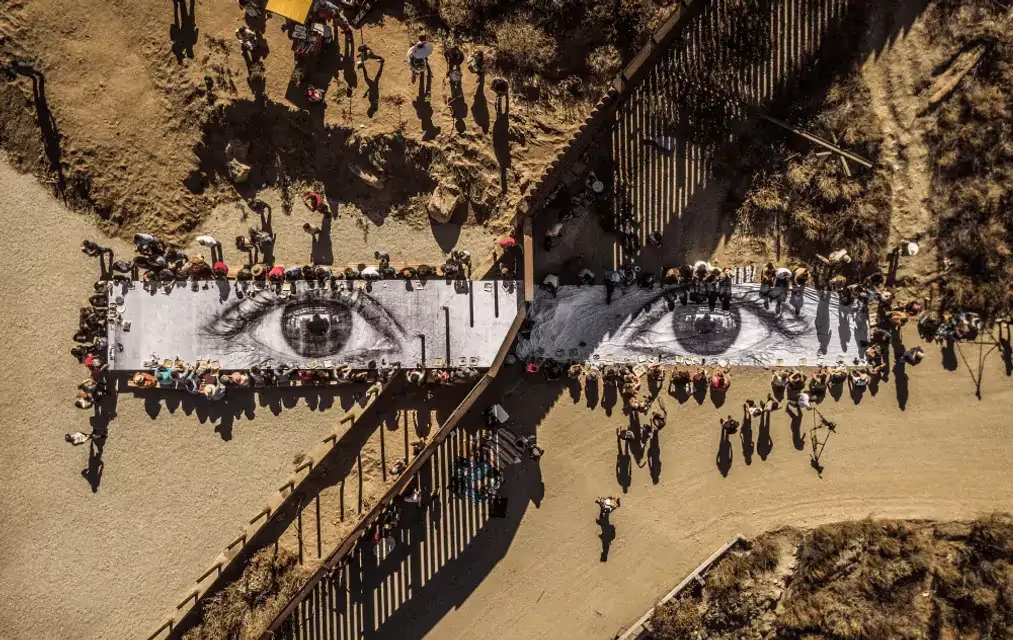THE EXHIBITION
TOYS SECTION
The second Art Explora exhibition at Hangar Y, Rayon Jouets presents a reflection on the toys that shape and condition our systems of understanding the world, from the earliest age. On view from May 18 to September 22, 2024.

Like the shelves of a department store, toys come and go, but they don't look the same. Aimed at the general public, the exhibition brings together some of the oldest toys found anywhere in the world, alongside recent works by international contemporary artists.

With works by some forty major and emerging contemporary artists and loans from four major museum institutions, Rayon Jouets explores toys (as objects), games (as practices) and their ideologies - in other words, the systems of understanding of the world they shape.
Emblems of childhood, toys have existed since prehistoric times and are the medium for play, a truly universal cultural fact. Like art, play is one of the phenomena that enable human beings to apprehend the world, shaping the child's relationship with reality and shaping the adult he or she will become.
Some toys have a hidden agenda: behind their inoffensive veneer and their ostensible role of entertainment, they are imbued with visions of society that reproduce what might be called the norm. Until the end of the 19th century, they were primarily a means of learning. The importance of leisure, development and imagination was only belatedly recognized, thanks to the educational movements of the 20th century.
Rayon Jouets looks at toys and play through the prism of "conditioning", examining how toys are "conditioned", i.e. "produced" (both materially and ideologically), and how play can, in turn, condition children.
A curatorial and scientific committee

The Rayon Jouets exhibition features 50 works by some 40 contemporary artists alongside more than 80 antique toys from four major museum institutions:the Musée des Arts Décoratifs (Paris), the Musée des Civilisations de l'Europe et de la Méditerranée - MUCEM (Marseille), the Institu
The content of the Rayon Jouets exhibition is based on the scientific advice of Anne Monier Vanryb on historical and modern toys, and the expertise of Cédric Fauq on contemporary artistic creation. Artistic direction is provided by Blanche de Lestrange.
The artists in the exhibition
The Rayon Jouets exhibition brings together some fifty works by contemporary artists: paintings, sculptures, installations, videos, video games... What these artists have in common is that they turn the toy on its head, sometimes against itself, to encourage a different way of looking at it. Internationally renowned and emerging artists from all horizons are featured in this exhibition, which questions the toy from a number of angles. Some works feature an interactive dimension, offering visitors a unique, dynamic and interactive experience.
They include :
Monira Al Qadiri, Francis Alÿs, Mathis Altmann, Nina Beier, Neil Beloufa, Eloise Bonneviot & Anne de Boer, Tommy Cash, Debora Delmar, K. Desbouis, Cécile Di Giovanni, Gerrit Frohne-Brinkmann, Simon Fujiwara, Elsa Goussies, Matthieu Haberard, Rachel Hobkirk, Tony Hope, Esteban Jefferson, Gregory Kalliche, Ghislaine Leung, Nevine Mahmoud, Gabriel Massan, Ad Minoliti, Chalisée Naamani, Arash Nassiri, Charlemagne Palestine, Benoît Piéron, Hannah Quinlan & Rosie Hastings, Bunny Rogers, Janne Schimmel, Cindy Sherman, Flannery Silva, Aviva Silverman, Kyle Thurman, Dziga Vertov, Marianne Vieulès, Julia Wachtel, Zhi Wei, Murphy Yum.
The exhibition route in 6 key themes

Identity
When American businesswoman Ruth Handler presented Barbie at the American International Toy Fair in 1959, she was the first doll representing an adult woman to be mass-produced. This new toy line from Mattel marked a turning point in the world of toys, since until then dolls had mainly represented infants and children. The Barbie doll has been the subject of much criticism since its creation, but it is also evidence of a shared awareness of the influence of toys on the construction of identity in children. The works of the artists presented in this section complicate this relationship.
Generation
While toys are primarily intended to be handled by children, they are also coveted by adults, who collect them and may use them for entertainment or therapeutic purposes. Toys also concentrate memories, and as such have the power to function as time portals. In this section, historical artefacts and the works of artists on display bear witness to toys' relationship with time. Some cross generations, while others are specific to a given historical period. Some artists take an interest in the figure of the toy collector, or even adopt this role.

Transaction
Marbles, playing cards, board games... While toys are first and foremost about ownership ("It's MY game! It's MY turn!"), some are based on exchange and transaction, imitating the workings of the "grown-up world" (dolls' houses come to mind). However, the filter of play always makes a distinction from reality, or even abstracts from the real world. This section of the exhibition focuses on artists who rub shoulders with the real world, seizing on transactional logics to produce their work. Finally, the term "transaction" also serves as a reminder that toys are subject to economic contingencies and always go hand in hand with a sales Award , a market that has continued to grow since the Industrial Revolution and one of its correlates: the Universal Exhibitions, in which toys had a prominent place.
Control
In the collective imagination, toys are primarily used for entertainment, education and even emancipation, but we also know that they have been manipulated for purposes of control and propaganda. It could even be said that the imaginary worlds conveyed by toys, since they are designed and produced by adults, are always "copies" of the "grown-up world", and therefore participate, for the most part, in the reproduction of standardized ideologies. For example, children are taught to perform certain jobs, inculcated with the notion of private property, and even trained to act like parents. It's hardly surprising, then, that political, military and even religious powers seize upon toys to help shape minds. All the works and objects in this part of the exhibition bear witness to the manipulation of toys as a tool of control.

Conflict
German philosopher and art historian Walter Benjamin, in his essay "The Cultural History of Toys" (1928), argues that the history of toys is also the history of conflict between children and adults. From wooden swords to toy guns and toy soldiers, it's easy to see the omnipresence of violence in children's toys. In certain historical and geopolitical contexts, the aim is to "prepare" children to join the ranks, but sometimes it's also a question of making war more liveable, less violent, and giving it a more acceptable image. Among the games and objects presented in this section of the exhibition, some artists transform violent experiences into a series of plush toys and figurines.
Resource
In the long history of toys, a major paradigm shift can be identified when plastic made its appearance in production plants. While toys had been made from natural materials (earth, wood, metals, etc.) since ancient times, the industrial revolution of the 19th century and the technological advances made possible by the Second World War led to an intensification of plastic toy production. At the same time, toy packaging became a subject in its own right, increasing the use of plastic. This final section of the exhibition highlights the complex and sometimes contradictory relationship between toys and natural resources.
Around the exhibition
A toy catalog as a visitor's booklet
The visit booklet, imagined with game design agency l'Equipe Ludique and designed by Matthieu Djadaojee and Léo Imbert, will be conceived like a toy sales catalog. This tool, aimed at families in particular, is designed to create an intergenerational dialogue and encourage the creation of shared memories around toys. Young and old alike will be invited to explore the shelves of this department store, guided by two characters featured in the exhibition: Tchebourashka and Nukerashka. Chebourashka is a character from Russian children's literature of the late 20th century, while Nukerashka is the name given to a sculpture by artist Tommy Cash that takes its features. As the pages turn, these two pieces come to life to reveal the stories behind the toys and artworks in the exhibition, and to help visitors understand the key messages of each section. Fun and educational activities also invite visitors to activate the mediation devices integrated into the exhibition.
.avif)
Multisensory and interactive devices
Discover the sound of antique rattles thanks to a sound terminal, take a photo of yourself disguised as a toy, observe a game of goose with a magnifying glass, plunge your hands into boxes blindly and try to guess what's hidden inside, imagine the new inhabitants of a doll's house: these are just some of the multi-sensory and interactive devices on offer to awaken sensitivity and curiosity. Sensitive labels at children's height will also be integrated throughout the visit, to help the youngest visitors get to grips with the works. In addition to on-site mediation, learning and artistic discovery programs will be offered throughout the exhibition. Every Monday, school groups are invited to discover the works through a guided tour led by Hangar Y's mediation teams, followed by an artistic creation workshop. On Wednesday mornings and throughout the summer, groups from the social and extracurricular fields will also be welcomed for an exploration supervised by Art Explora Foundation volunteers, adapted to the needs and desires of each group.
Practical information
Access
9, avenue de Trivaux - 92190 Meudon - France
Stations: Meudon Val Fleury (RER C), Meudon (Ligne N)
Bus: Lines 169, 289, 389 (stop: Trivaux-Hangar Y)
Rates
Exhibition: €10 / €7
Free for children under 6, people on minimum social benefits, people on minimum old-age pension, disabled people and their companions.
Opening hours
The hangar is open from 10am to 8pm on weekends and public holidays, and from 11am to 7pm on weekdays during school vacations (zone C).
















.avif)








